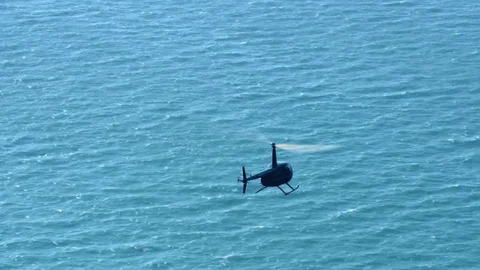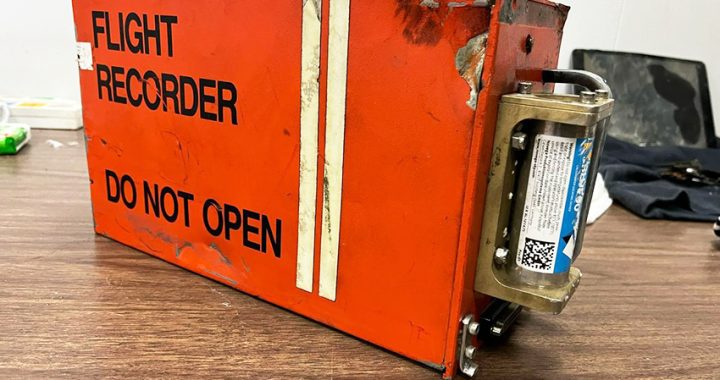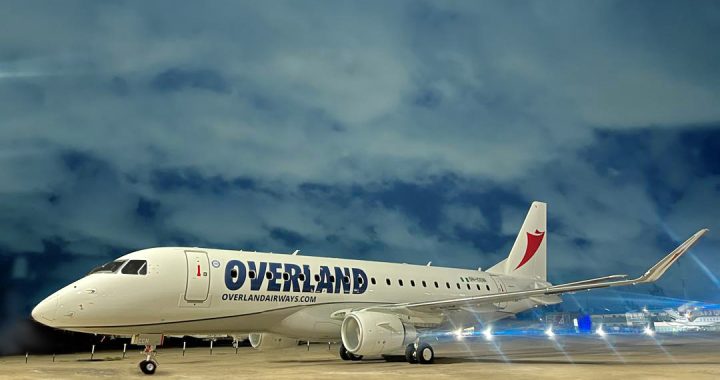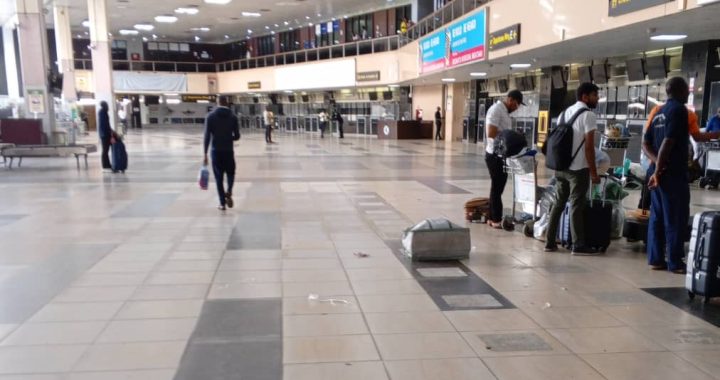NAMA, FAAN urged to be meticulous, NCAA to firm up oversight task- AIB
6 min read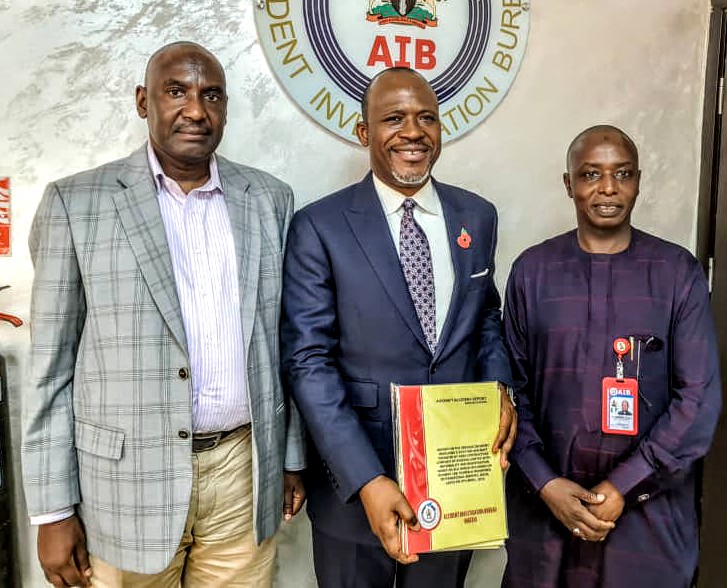
Left: Director of Engineering, Engr. Hashim Wali, Commissioner/CEO, Accident Investigation Bureau, Nigeria (AIB-N), Engr. Akin Olateru and Director of Operations, Capt. Dayyabu at the release of three Accident Reports and two Safety Bulletins at the Bureau’s Corporate Headquarters in Abuja.
In the latest serious incidents final report released by the Accident Investigation Bureau, AIB, most of the safety recommendations proffered are a clarion call to all stakeholders to rededicate themselves to the ideals of aviation which will provide dividend in safety and commercial success.
Few of the reports are highlighted here and are followed with the bureau’s recommendations which are the elixir in continuing to making the industry thrive.
REPORT AND RECOMMENDATIONS
Kabo Air Hajj Operation 2013
AIB-N investigation revealed that, On 4th October 2013, at about 20:59 hrs, a Boeing 747-200 aircraft with nationality and registration marks 5N-JRM, operated by Kabo Air Limited as a charter (Hajj) flight with call sign QNK617, departed Mallam Aminu Kano International Airport (DNKN) Nigeria, en route King Abdul-Aziz International Airport Jeddah (OEJN), Saudi Arabia via Sultan Abubakar Airport, Sokoto (DNSO), Nigeria, on an Instrument Flight Rules (IFR) Flight Plan.
The flight with 512 persons on board, inclusive of 18 crew members with seven hours’ fuel endurance, contacted DNSO Air Traffic Control (ATC) and was cleared for ILS approach Runway 08. The crew reported air field in sight and elected for visual straight-in approach Runway 26. During the approach to land, QNK617 impacted the Localizer Antenna/Approach Lighting System, touched down 100m short of RWY 26 threshold at 21:40 hrs, a night, and continued with the landing roll onto the runway until it came to a stop. The aircraft then taxied to the apron.
During transit walk-around, the crew found that two of the aircraft’s right main wheel tyres had burst. There was no reported injury to persons on board.
AIB-N found two elements as contributory factors to the serious incident. The report fingered Unserviceable Visual Approach Slope Indicator (VASI) on Runway 26. Also found faulty was the decision to land on the non-precision runway 26 at night.
Recommendation
The bureau offered one safety recommendation that, “Kabo Air should ensure that flight recording devices (FDR and CVR) installed on all aircraft in its fleet are preserved, maintained, serviceable, and operated in accordance with the provisions of the existing Nigeria Civil Aviation Regulations
(Nig. CARs) Parts 7.8.1.3, 7.8.1.4 (a), 8.5.1.24 (b)(c) and 8.14.10.3 (a)”.
Aero Contractor 2016
Another final report is that of a serious incident on 9th April 2016 at about 18:18 hrs, a Boeing 737-500 aircraft with nationality and registration marks 5N-BLG, owned and operated by Aero Contractors as a scheduled commercial flight (NIG316) from Port Harcourt to Lagos on an Instrument Flight Rules (IFR) flight plan, which touched down on runway 18R and veered right of the centre line into the grass verge.
Investigation revealed the Prevailing weather information reported rain overhead the station with a visibility of 3,000 m. During ILS approach on runway 18L, at an altitude of about 500ft, the crew executed a missed approach due to strong crosswind.
The report revealed the crew thereafter requested for runway 18R and was granted with ATC weather information reporting wind at 090˚̊ /15kt with a visibility of 3,000 m in moderate rain.
The crew stated that the second approach was stable for landing but on touchdown, with an increase in the intensity of rain and accompanied with reduced visibility, the aircraft veered into the grass verge. The Captain took control of the aircraft and brought it back to the runway. The aircraft was taxied to the apron and parked at the A6 parking bay.
Engines were shut down and all 64 persons onboard the aircraft, including five crew members, disembarked with no injuries. Instrument Meteorological Conditions (IMC) prevailed at the time of the incident. The incident occurred after sunset.
AIB-N investigation crew found the followings as causative factors; Excessive rudder application by the crew after touchdown. Reduced visibility due to heavy rain on touchdown. And the decision to continue approach in an unfavourable weather condition with a crosswind component of 090˚ /15kt.
Recommendations
Succinctly put, AIB-N recommended thus;
(1.) That Aero Contractors management should lay more emphasis during flight crew simulator training, on the effects of excessive rudder application at high speeds during the landing roll, particularly on wet/contaminated runways.
(2) Aero Contractors’ management should sensitize their crew members on the necessity of reporting notifiable occurrences. And (3) NCAA should ensure that all airline operators review their SOPs to include the procedure for isolating power to the cockpit voice recorder to preserve its contents from being overwritten, in the event of any reportable occurrence.
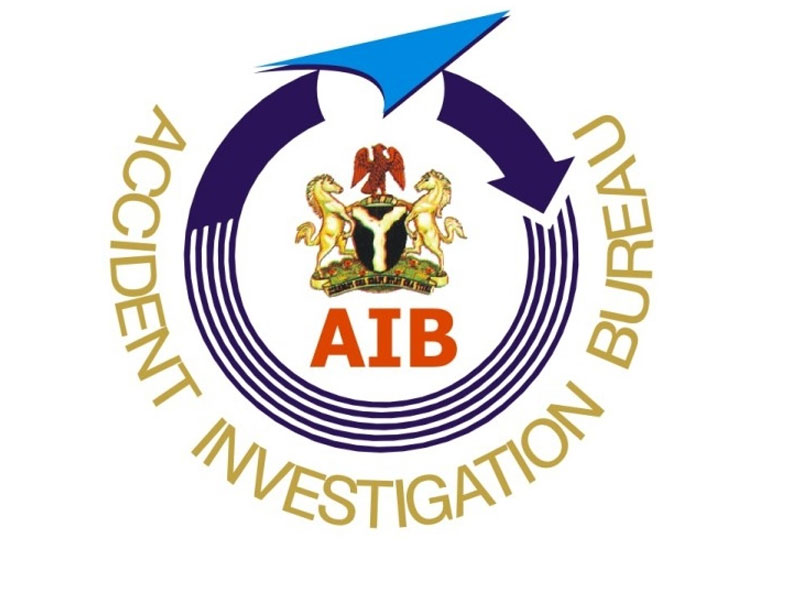
SKYBIRD AIR
Another final report of a serious incident now in the public domain is that of a Gulfstream IV (G-IV) aircraft with nationality and registration marks 5N-BOD, operated by SkyBird Air Ltd, on an Instrument Flight Rules (IFR) Flight Plan, which On 12th September 2018, at about 20:20 hrs, departed Murtala Mohammed International Airport (DNMM) Lagos, for Nnamdi Azikiwe International Airport (DNAA), Abuja on a post-charter return to base flight, with One (1) person and Five (5) crew on board, with an endurance of four hours.
According to findings by the investigators, ‘’the aircraft departed Lagos at 20:20 hrs and climbed to Flight Level 350 (FL350) as cleared. The en-route weather was stormy almost all the way. Following an uneventful flight, the aircraft contacted the DNAA Approach Radar and was given clearance for Radar Vectors for an ILS approach Runway (RWY) 22’’.
AIB-N reported that ‘’at 21:11 hrs, 5N-BOD established initial contact with Abuja Control Tower and reported 9 NM finals and fully established on ILS RWY 22. The controller advised the crew to exercise caution as runway surface was wet, and thereafter cleared the aircraft to land. 5N-BOD acknowledged and continued approach normally’’.
According to AIB-N, “Upon touchdown, the captain noticed the aircraft was not decelerating as it should and that the Thrust Reversers (TR) were not deploying, even though he could see physically that the aircraft was properly configured. He pulled the speed brake handle to possibly force the Nutcracker, (Weight on Wheel Switches), into the “Ground Mode” and get the TR to deploy. The aircraft exited the end of the runway, travelled over a grassy area before it came to a stop in the mud at approximately 71m from the end of RWY 22”.
All occupants exited the aircraft unhurt. The Aerodrome Rescue and Fire Fighting Services (ARFFS) arrived at the scene and provided fire cover and lighting support for the area. The serious incident occurred at 21:14 hrs at night.
Investigators found two major causative factors described as; “the delayed response by the crew to recognize that the ground spoilers and thrust reversers were locked out led to the runway overrun.
Also identified as a contributing factor was, the delayed deployment of ground spoilers which led to the flight crew’s problems in stopping the aeroplane within the remaining available runway length:”
Recommendations
Nine safety recommendations were proffered, three salient ones are hereby highlighted;
** Management of the Federal Airports Authority of Nigeria, FAAN, should ensure that disabled aircraft are promptly removed from the incident site in accordance with Disabled Aircraft Recovery Manual NAIA Abuja (Chapter 3 REMOVAL INSTRUCTIONS NAIA).
** It is also recommended that FAAN should ensure that ARFFS units are adequately staffed at a level that enables ARFFS personnel, upon arrival at an accident scene, to conduct exterior fire-fighting activities, interior fire suppression attack and a rescue mission concurrently.
** The recommendation urged that leadership of the Nigerian Civil Aviation Authority, NCAA, should ensure that all G-IV operators, require flight crew to call-out if the ground spoilers do not automatically deploy and the thrust reversers are not deployed during landing.
Also, a call-out when the ground spoilers have deployed, and verify they include these procedures in their checklists and training programs. The procedures should clearly identify which pilot is responsible for making these call-outs and which pilot is responsible for deploying the spoilers if they do not automatically deploy.
Other reports released are those concerning trainee Pilots at the nation’s premier and prestigious flying school, Nigerian College of Aviation Technology, Zaria, Kaduna State, Nigeria.
These latest reports and earlier ones can be accessed at www.aib.gov.ng
![]()

